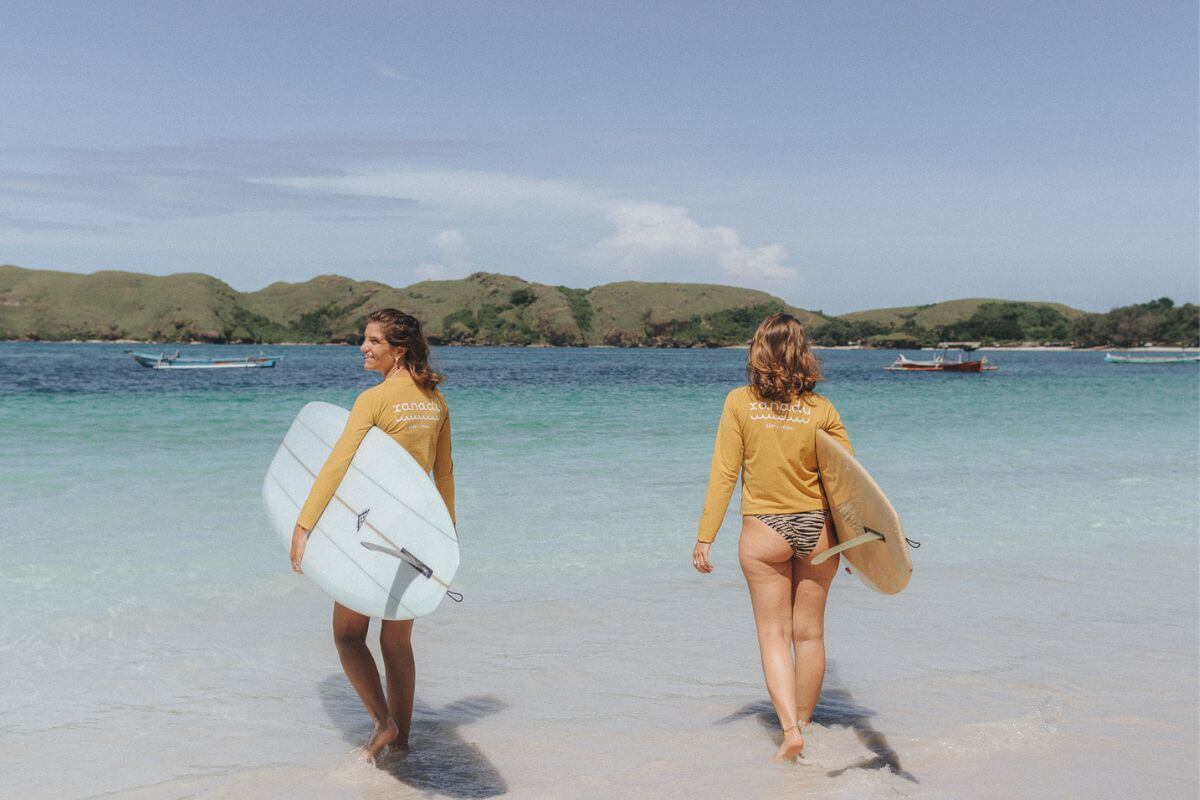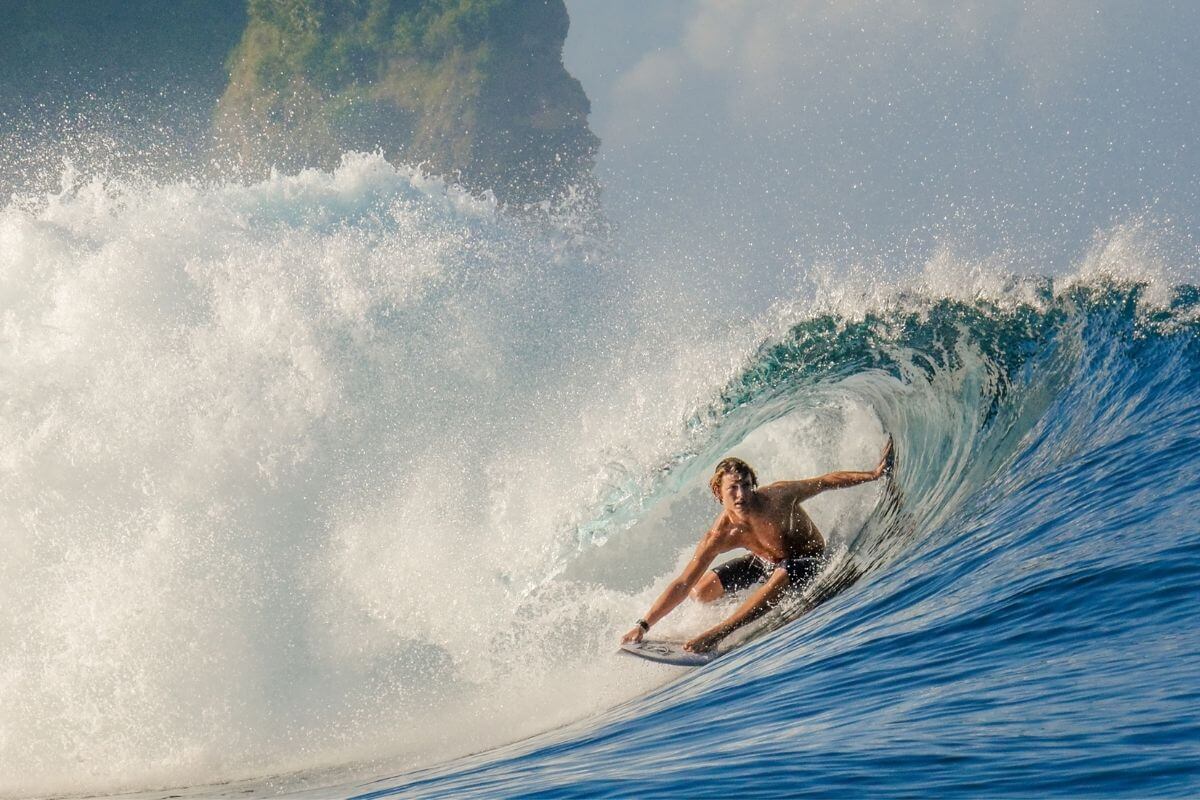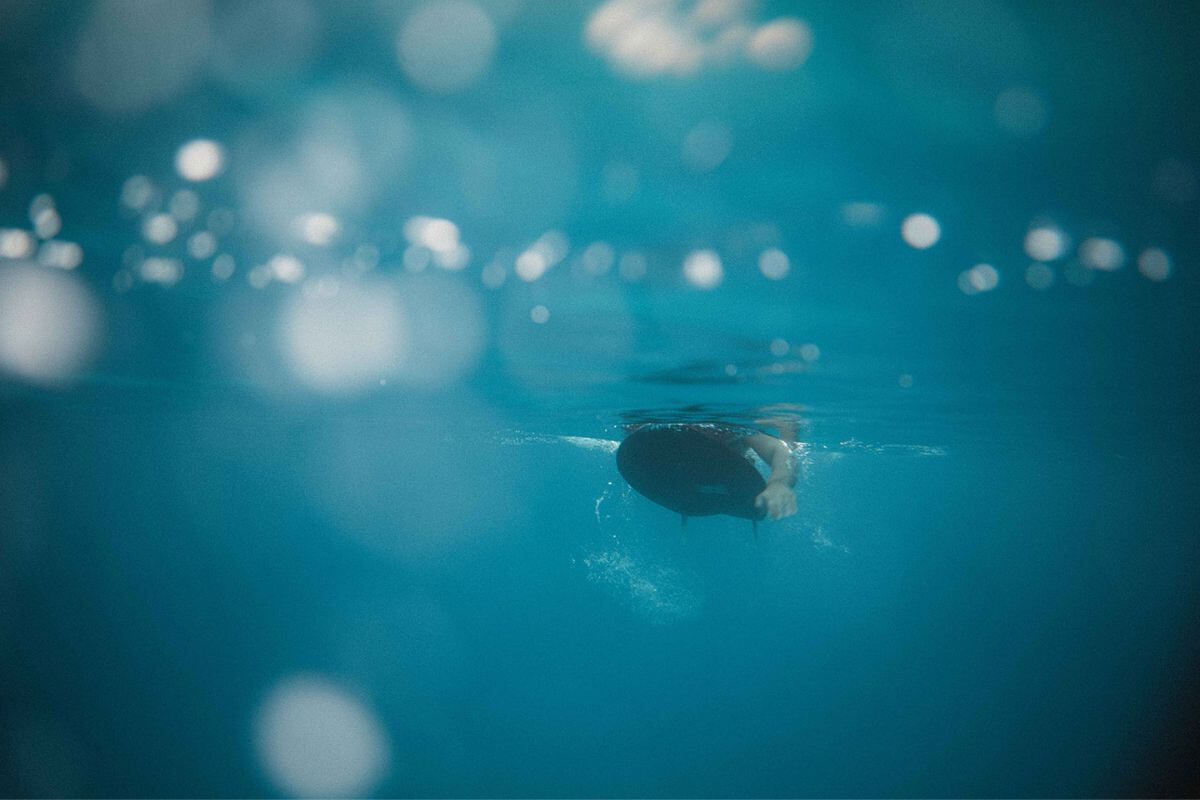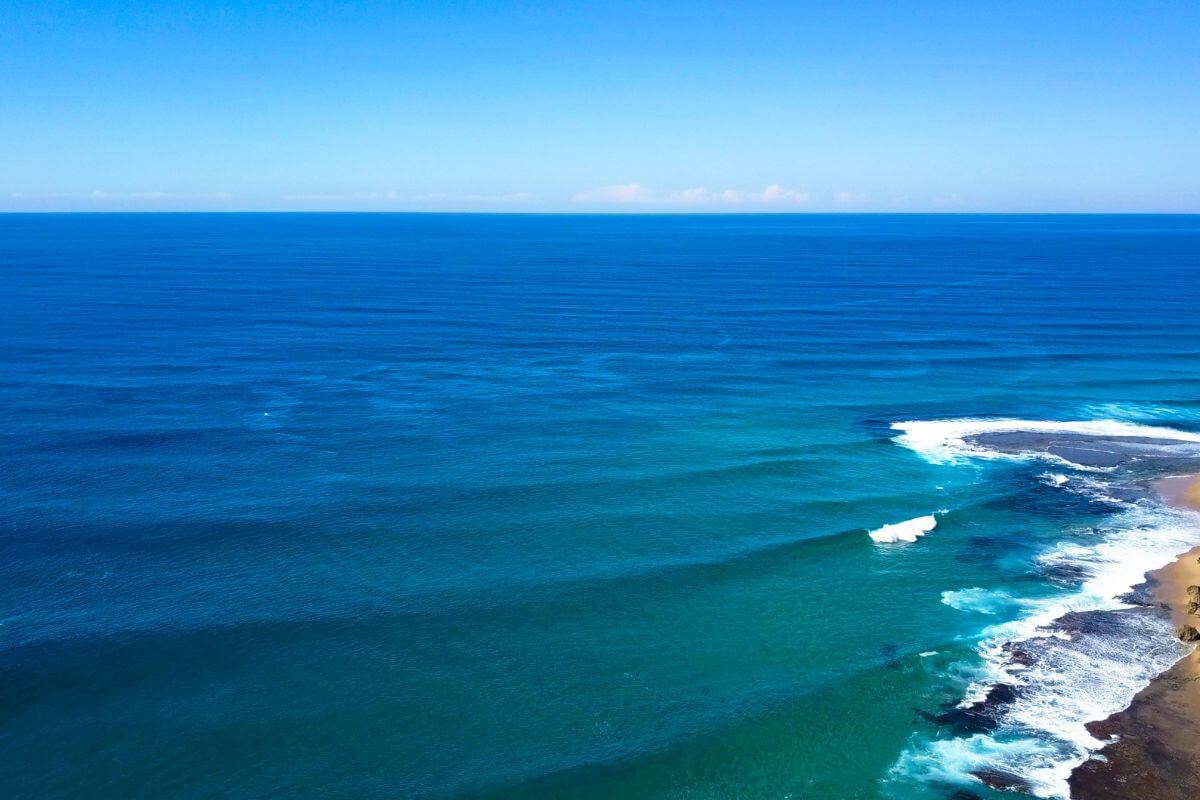As the saying goes, there is no bad weather, just the wrong clothes. The same goes for surfboards! The right board for the right conditions can make or break your session. Whether you’re a seasoned pro or a novice eager to catch your first wave, understanding the characteristics and purposes of different types of surfboards is essential.
From the high-performance agility of shortboards to the classic stability of longboards, surfboards come in various shapes and sizes, each tailored to different surfing styles and wave conditions. In this comprehensive guide, we’ll look at the types of surfboard available, exploring the characteristics, best-use scenarios, and iconic surf spots associated with each type of surfboard. Whether you’re carving the face of a powerful wave or gracefully hanging ten, finding the right type of surfboard is essential!
Shortboards:
Description: Shortboards are generally between 5 and 7 feet long with narrower dimensions and more aggressive rocker line. They are highly maneuverable and responsive, making them suitable for advanced surfers in more powerful waves. This is the go-to board for most intermediate to advanced surfers.
Best for: Powerful, steep waves with good energy.
Examples: The Mentawai Islands in Indonesia, Boat Charters in the Maldives, Hudhurnafushi in the Maldives.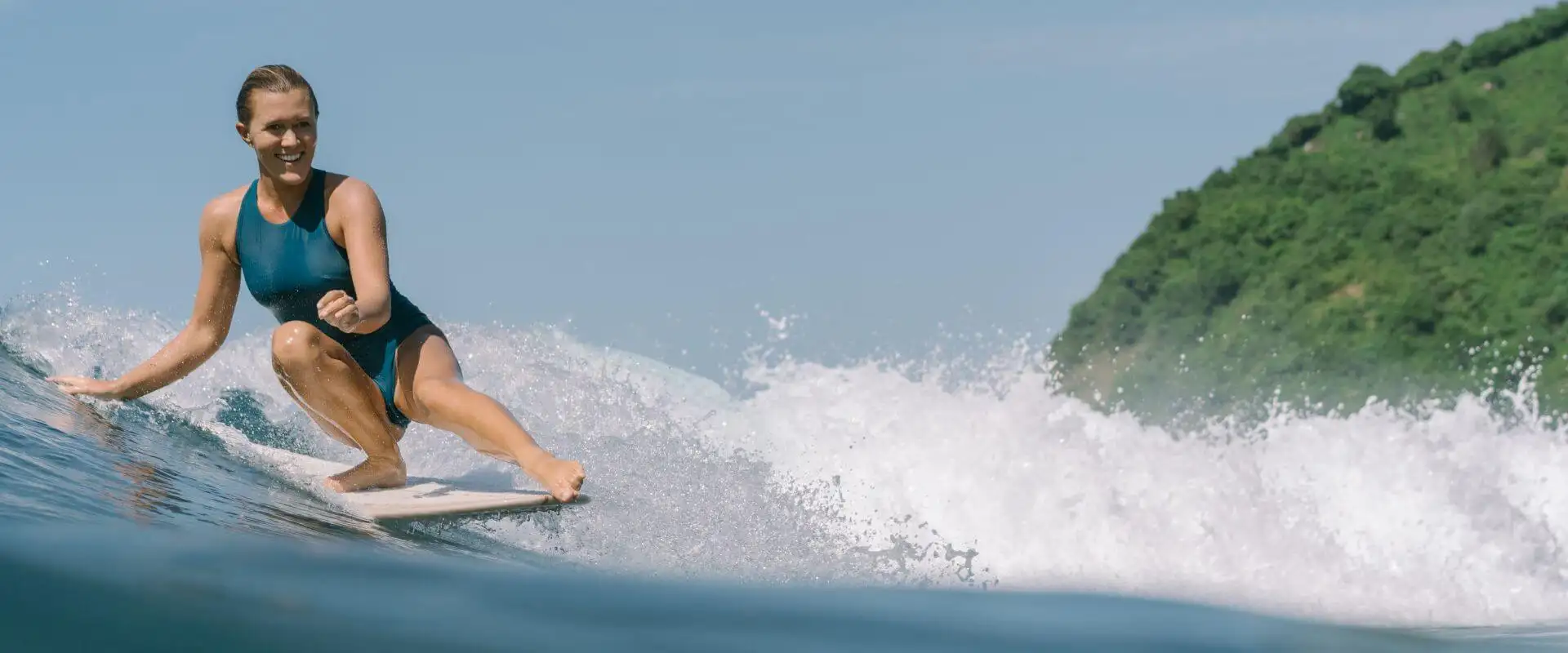
Longboards:
Description: Longboards, typically 8 to 12 feet in length, have a wider and more stable platform. They are great for beginners due to their stability and ease of paddling. Smaller longboards (around 8-9 feet) are excellent for beginners and intermediates, providing a stable platform for learning and smooth rides. Heavier logs (10 feet and above) are usually preferred by more advanced surfers for classic maneuvers, nose riding, and stylish turns.
Best for: Small to medium-sized waves, ideal for beginners and mellow, cruise-style surfing.
Examples: Malibu in California, Lombok in Indonesia.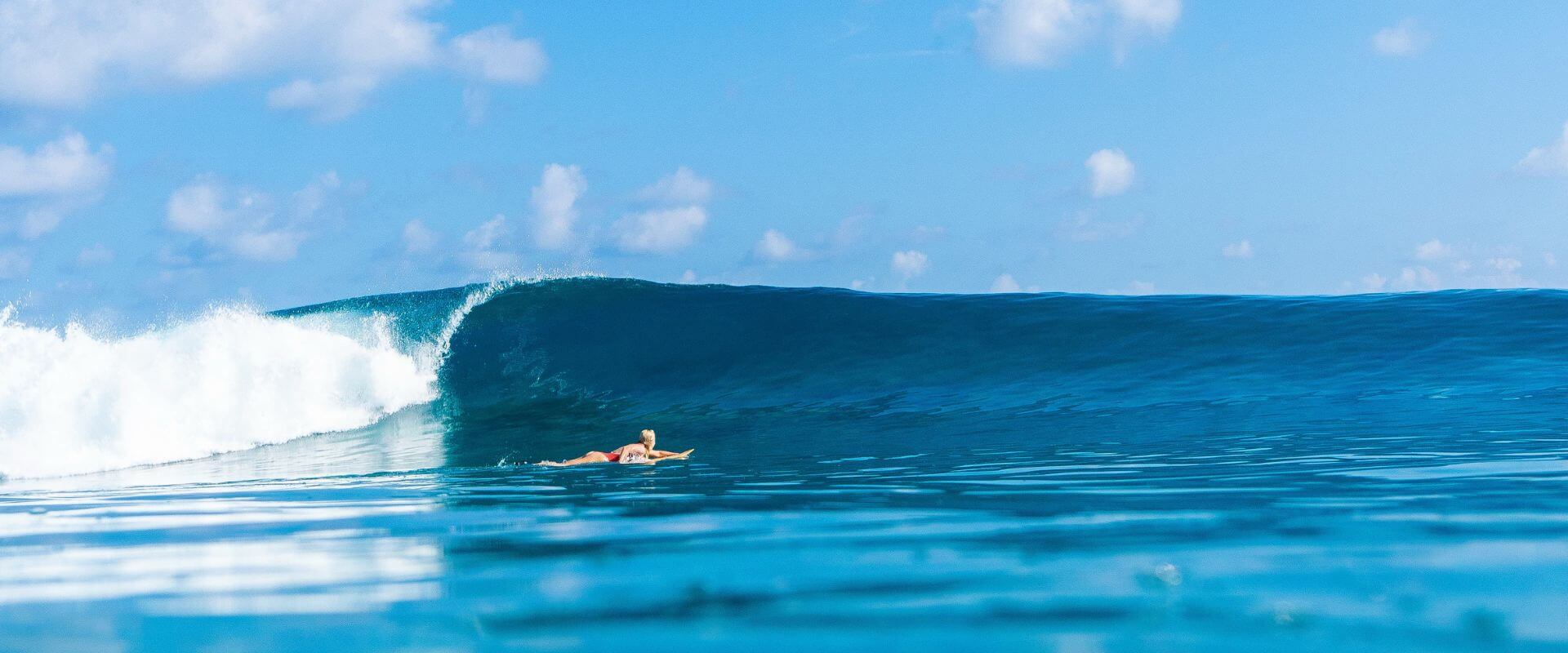
Funboard/Midlengths:
Description: Funboards, also known as mid-length boards, fall between shortboards and longboards in terms of size (usually 7 to 8 feet). They aim to combine the stability of a longboard with some of the maneuverability of a shortboard, making them versatile for a range of conditions and skill levels.
Best for: Varied conditions, suitable for a mix of wave sizes and types.
Examples: Canggu in Indonesia, Kabalana Beach in Sri Lanka.
Fishs:
Description: Fish boards typically have a wide, round nose and swallowtail design. They are shorter and wider than standard shortboards, providing good paddling speed and manoeuvrability. Fish boards excel in smaller, mushier waves.
Best for: Smaller, mushier waves with less power and steepness.
Examples: Smaller Days in the Maldives and Indonesia, Hirikitiya in Sri Lanka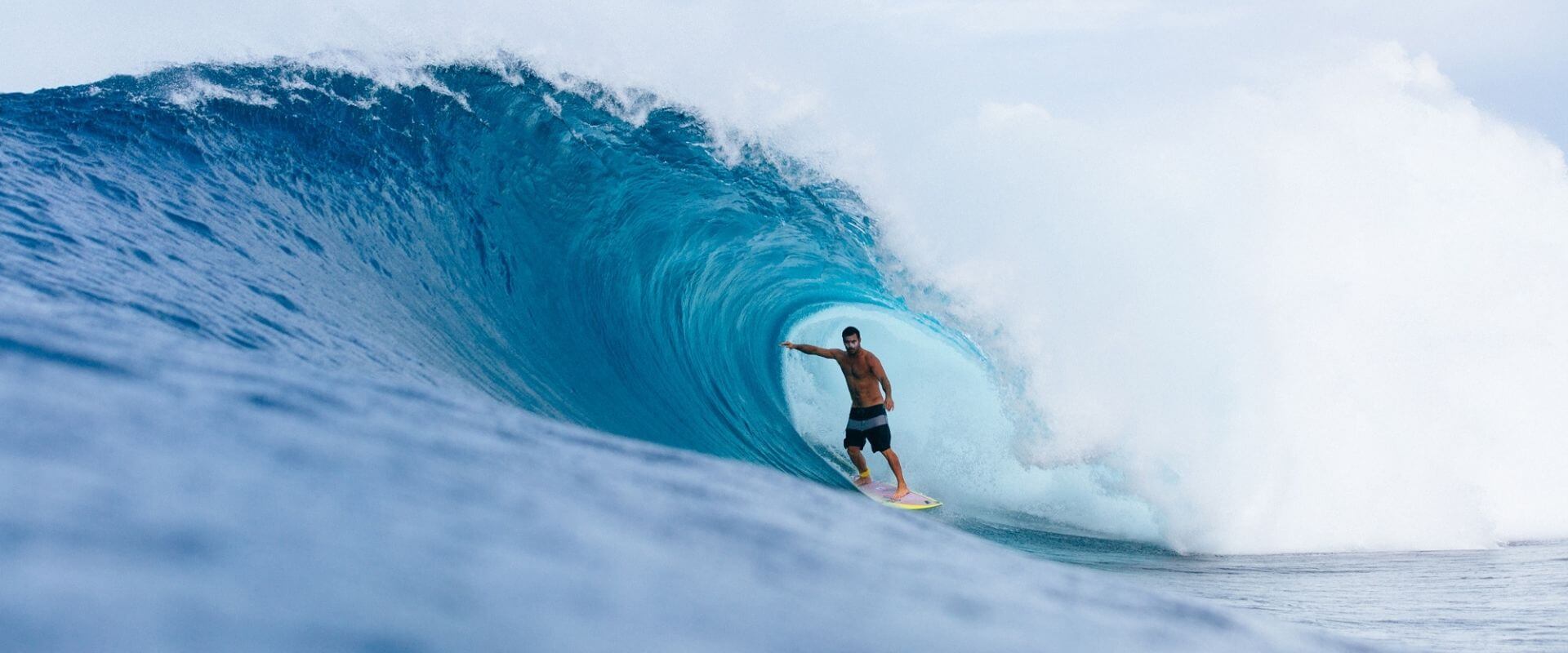
Step-Ups:
Description: Step-up boards are bigger shortboards that give you extra paddle power and confidence in heavier surf. They are usually a bit longer with extra volume than standard shortboards. Step-ups are there to help you get in early, make the drop, and pull into the wave of your life with confidence!
Best for: Solid, sizable waves with steep faces.
Examples: Cloudbreak in Fiji, G-Land in Indonesia, Bankvaults in the Mentawai Islands.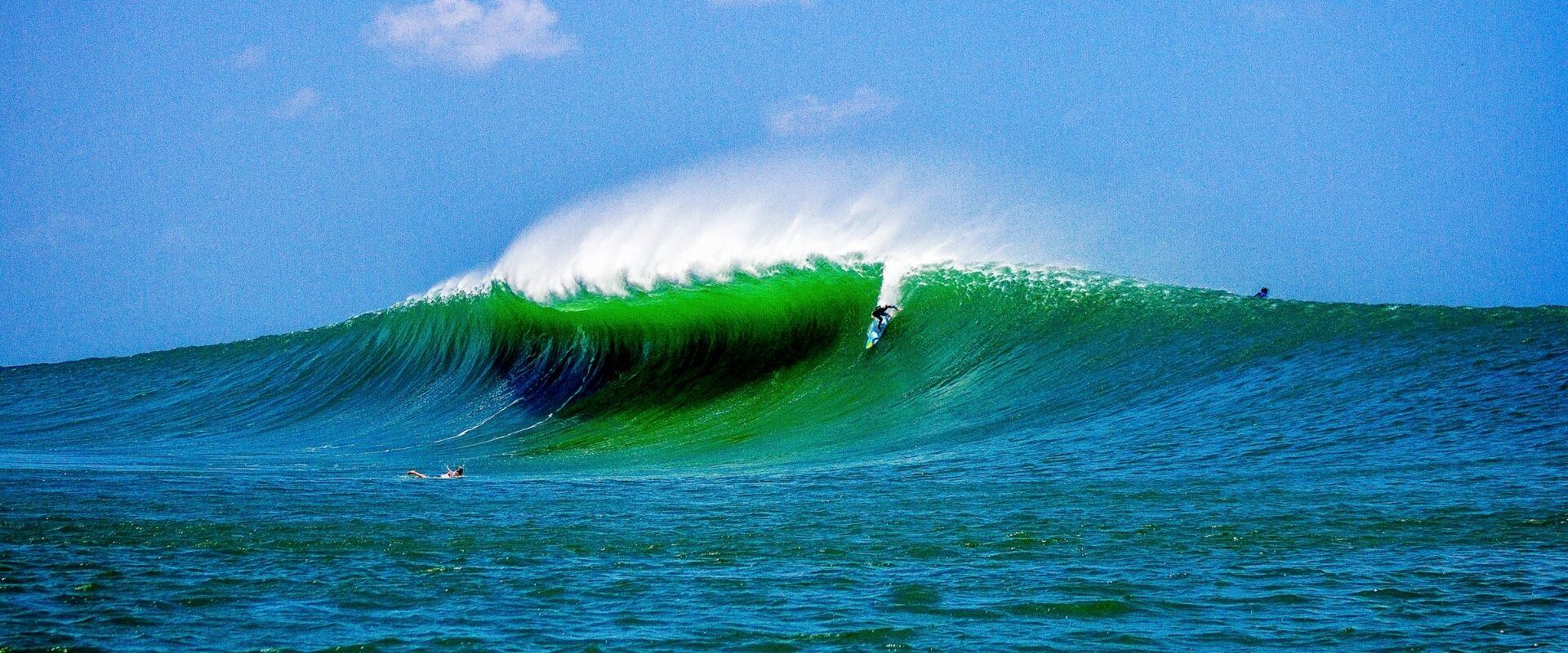
Guns:
Description: Guns are designed for big-wave surfing. They are longer (usually 7 to 12 feet) with tons of extra volume to give maximum paddle power. Guns come in many different shapes with different fin and tail configurations to match the waves they are designed for. They all have one thing in common though, they’re made to charge!
Best for: Large, powerful waves with significant size and energy.
Examples: The Bombie, Uluwatu in Indonesia, Nazaré in Portugal, Cloudbreak in Fiji.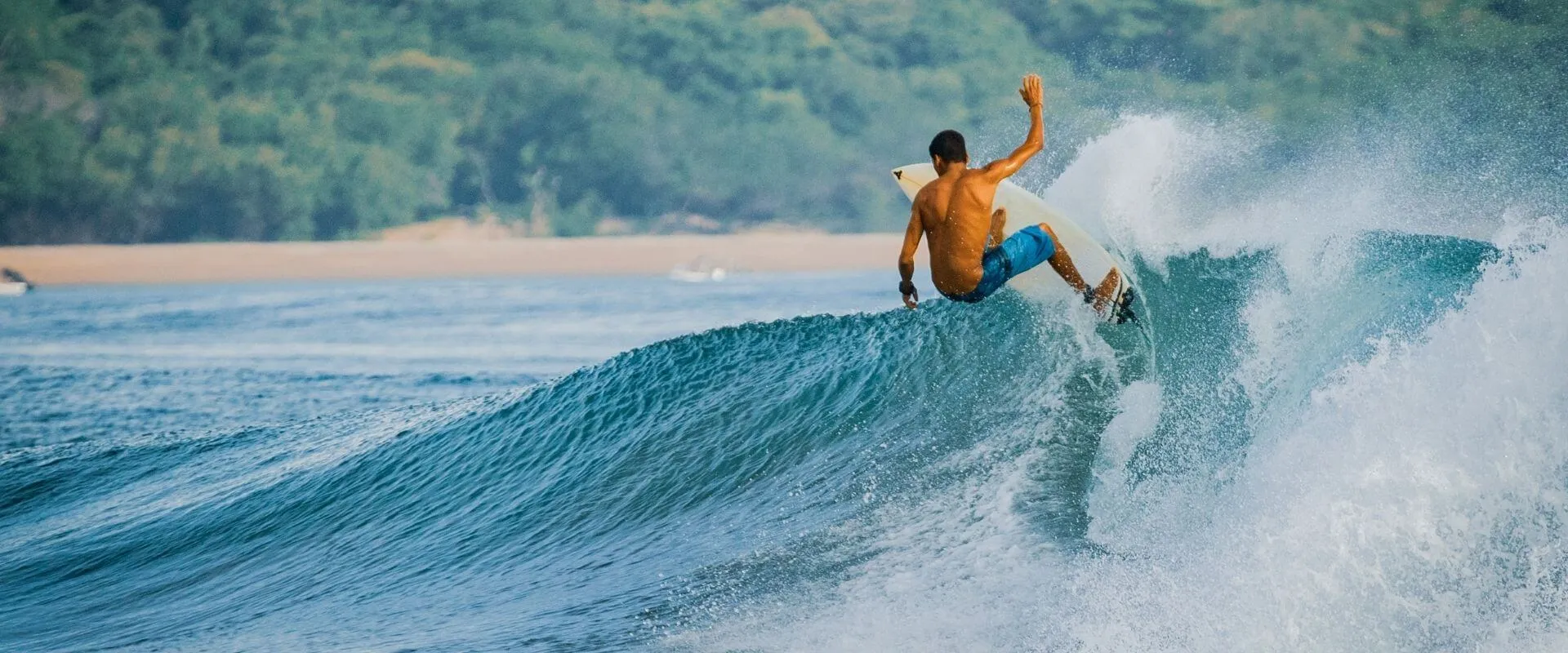
Hybrids:
Description: Hybrid boards combine elements from different board types to create a versatile option. For example, a “hybrid shortboard” might incorporate features from both shortboards and fishs.
Best for: Various conditions depending on the specific hybrid design.
Examples: Popoyo, Nicaragua, Rincon in California.
Eggs:
Description: Egg-shaped boards have a rounded nose and wide, round outline. They offer stability and ease of paddling, making them suitable for beginners and surfers looking for a more relaxed, cruisy ride.
Best for: Small to medium-sized waves, excellent for cruising and relaxed surfing.
Examples: Small days in the Central Atolls in the Maldives, Low Season in Indonesia
Mini Malibus:
Description: Also known as a mini-mal, these boards are a smaller version of the traditional longboard. They provide a good compromise between the stability of a longboard and the maneuverability of a shortboard.
Best for: Small to medium-sized waves, great for beginners and those transitioning from longboards.
Examples: Batu Bolong, Canggu in Bali, Summer in Sagres in Portugal, the Pass, Byron Bay in Australia.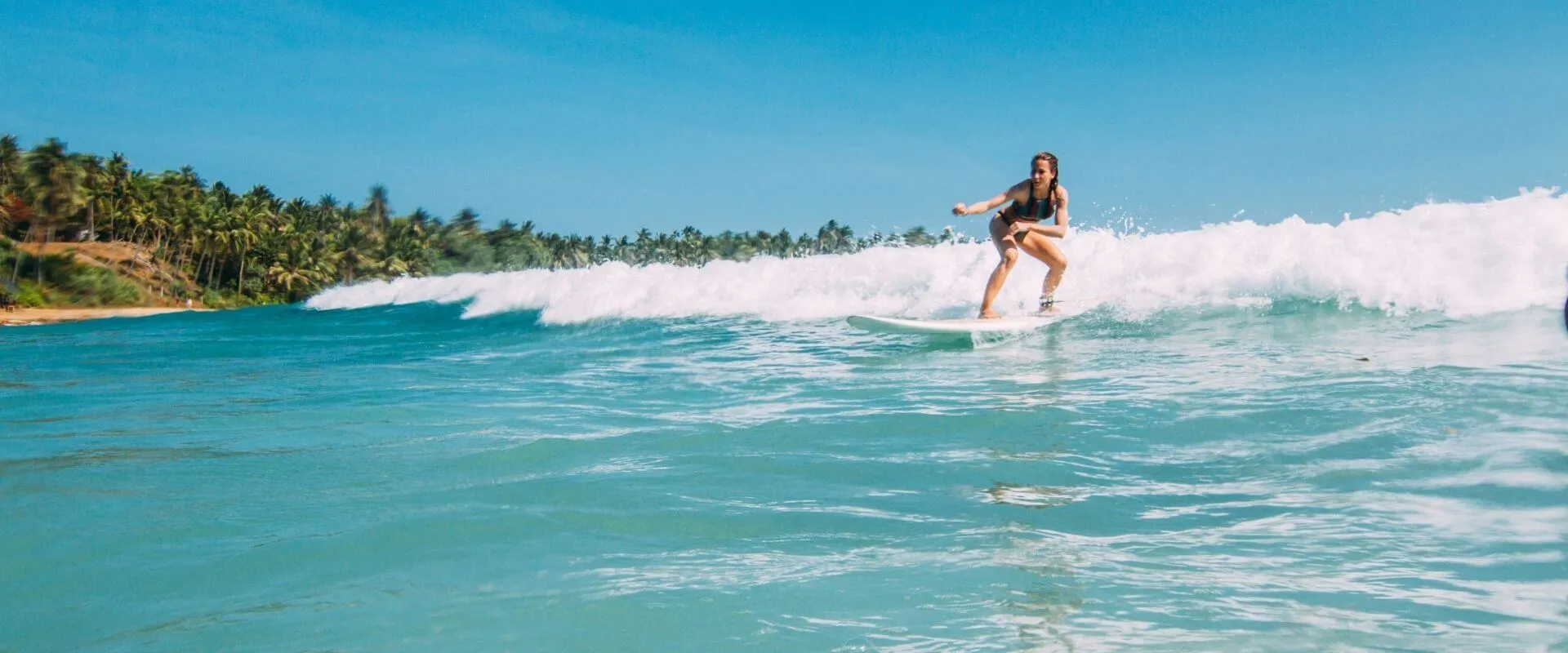
Soft-tops:
Description: Soft-top boards have a foam deck and are often used for beginner surfers due to their stability and forgiveness. They are less likely to cause injury and are excellent for learning the basics of surfing.
Best for: Small, mellow waves; ideal for beginners practicing the basics.
Examples: Weligama in Sri Lanka, Beachbreaks in Costa Rica, Beachbreaks in Portugal

